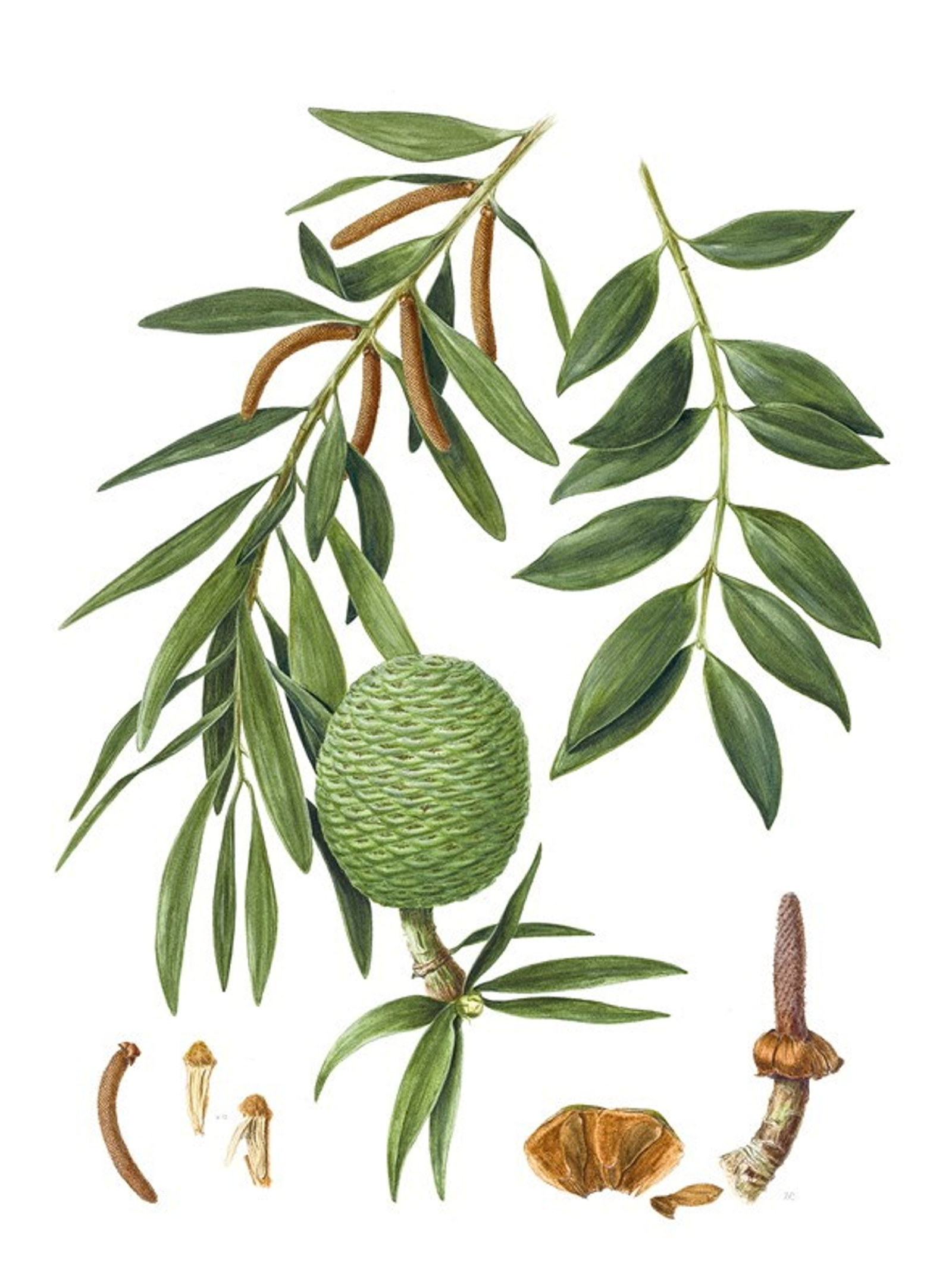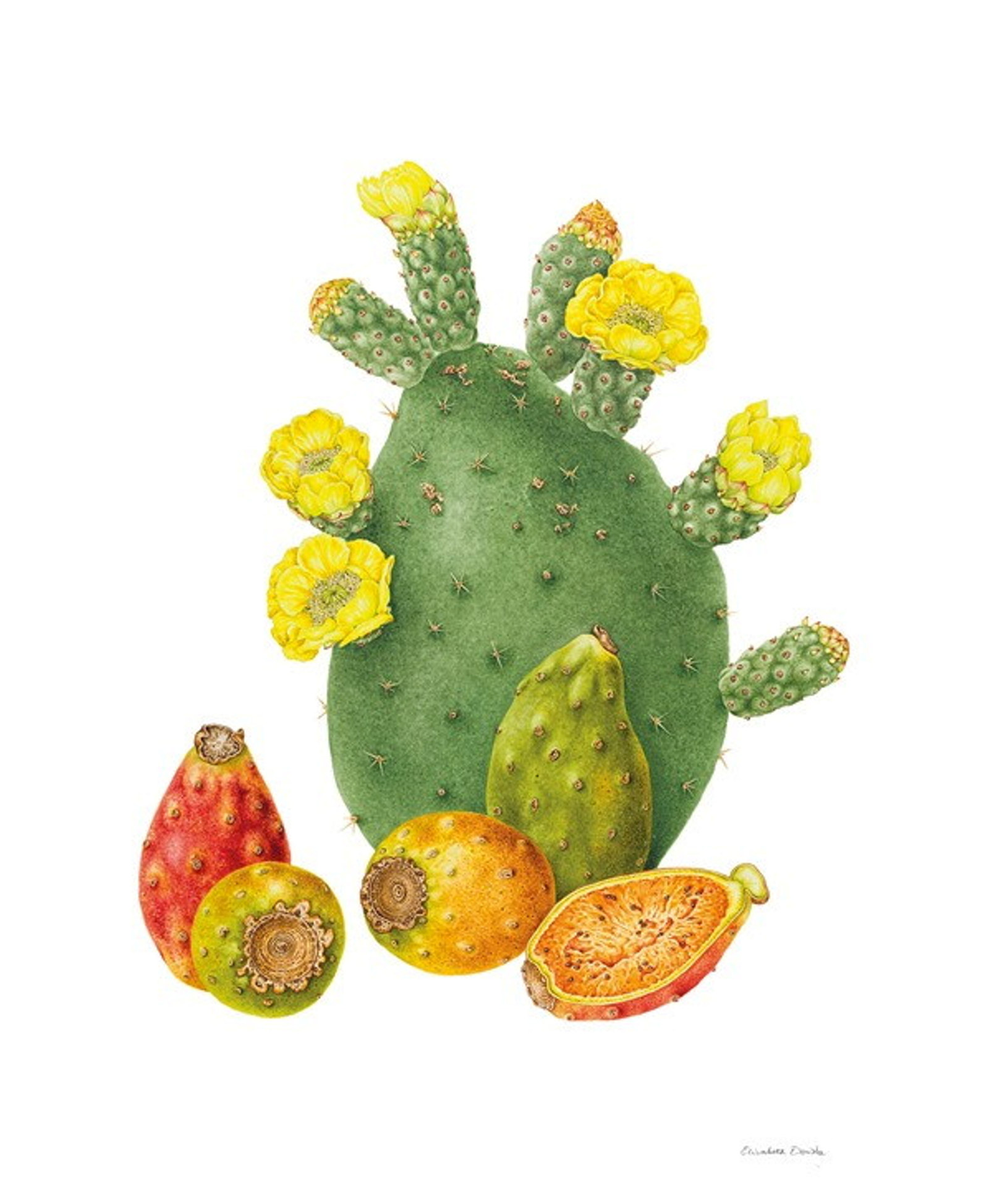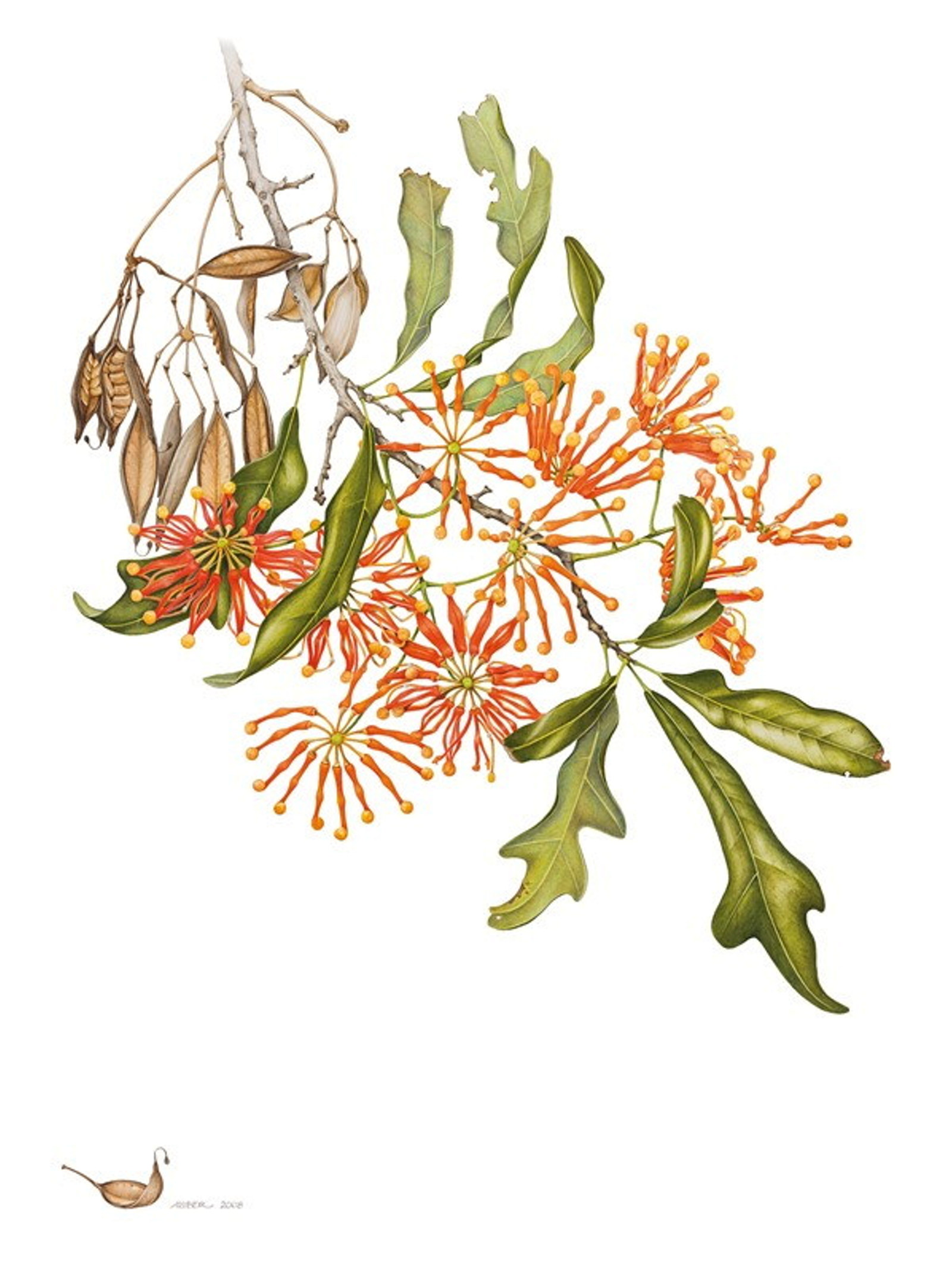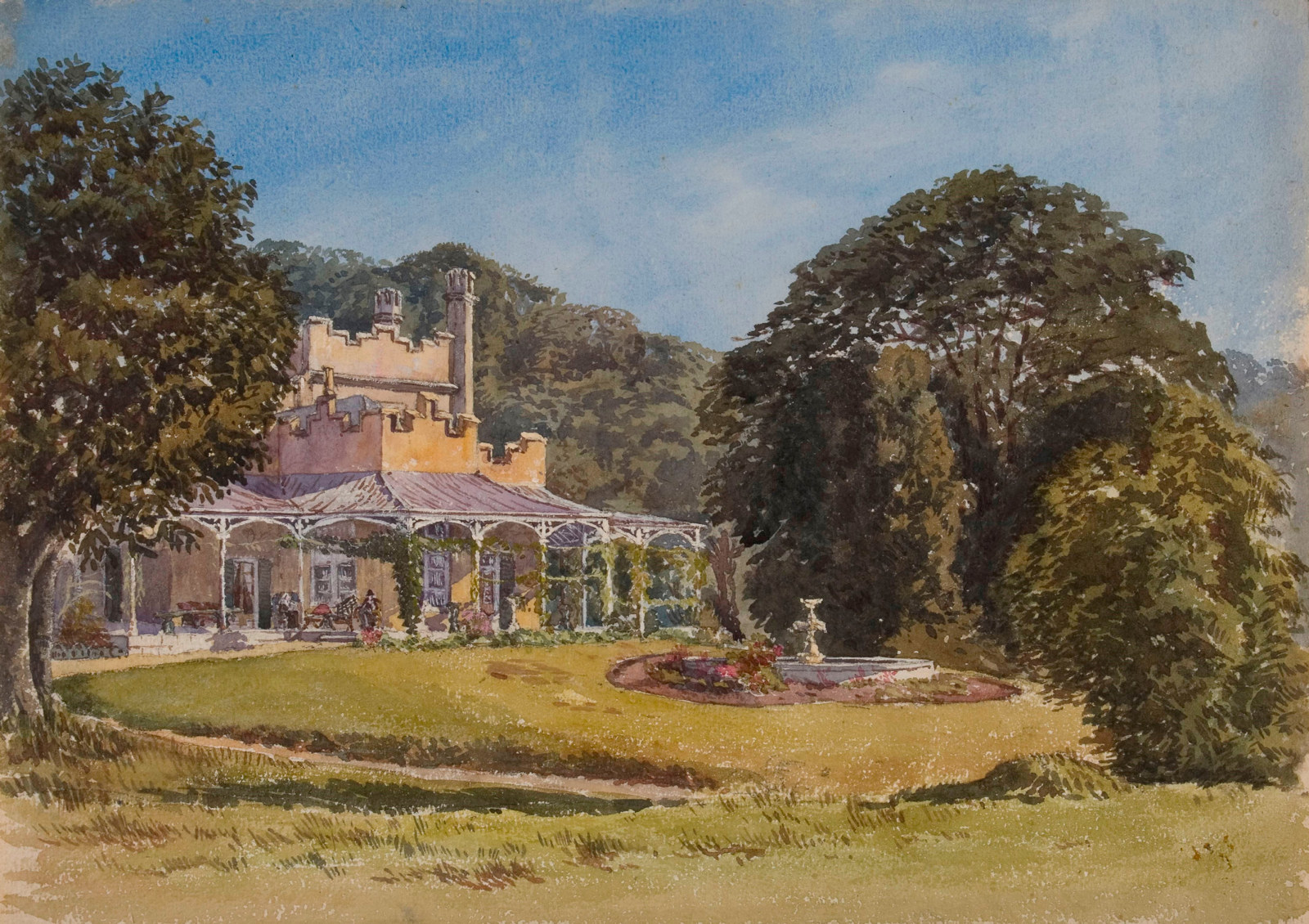Port Jackson fig
Ficus rubiginosa
Vaucluse House
'Surmounted by luxuriant foliage'
A giant Port Jackson fig standing at the eastern corner of Vaucluse House is likely to date from the mid-1850s. Together with an older Moreton Bay fig, planted on the western side, it framed the pale sandstone Gothic Revival house with dark evergreen foliage.
This planting style was favoured by the colony’s first landscape gardener of note, Thomas Shepherd, for the marine villas that began to adorn Port Jackson’s bays from the 1830s. For Shepherd, trees planted around a residence were a means of artfully complementing Sydney Harbour’s ‘richly picturesque and wooded hills’. In his Lectures on landscape gardening in Australia (1836), he pictured
these villas … surmounted by luxuriant foliage, the trees spreading their magnificent branches over the tops of the edifices.
Published on
Florilegium plants
Browse all
Florilegium plants
Queensland kauri pine
The kauri’s journey from the rainforests of Queensland to the garden at Elizabeth Bay illustrates the close links between gentlemen gardeners and the Botanic Garden

Florilegium plants
Prickly pear
The first Opuntia plants were introduced to NSW in 1788 in the hope of establishing a cochineal industry (prickly pears are host to the cochineal beetle, used in the manufacture of scarlet dye)

Florilegium plants
A gathering of flowers: the Florilegium collection
Finely detailed botanical artworks reveal the range of plants introduced to Sydney’s gardens over the past 200 years

Florilegium plants
Florilegium: plant stories from our gardens
Native plants and exotic species from abroad have shaped Sydney’s gardens from the earliest days of the colony. Through the tales of their discovery, collection and exchange, and the horticultural trends that drove their popularity, our gardens reveal captivating stories spanning more than 200 years